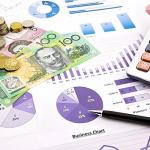Introduction
In Australia, motorcycles are becoming increasingly popular. With the growth of urban congestion and rising fuel costs, more Australians are turning to motorcycles as a viable transportation option. This increase in popularity highlights the need for new riders to make well-informed decisions.
Choosing the right first bike is crucial. A good choice can enhance your riding experience and ensure your safety on the road, whereas a poor choice can lead to frustration and potential hazards. This guide will help you navigate the essential aspects of buying your first motorcycle, ensuring that you make a choice that suits your needs and preferences perfectly.
Understanding Your Needs and Preferences
When it comes to buying your first motorcycle, one of the most critical steps is understanding your needs and preferences. This involves assessing various aspects of your riding experience, intended usage, and comfort requirements.
Assessing Your Riding Experience and Skill Level
Begin by evaluating your current riding experience and skill level. If you're a complete novice, you may want to start with a smaller, more manageable bike that is easier to handle. Advanced riders might seek out more powerful motorcycles that offer higher performance and features.
Determining Your Primary Use
Next, consider the primary purpose of your motorcycle. Are you planning to use it mainly for commuting in the city? If so, a lightweight, fuel-efficient bike might be ideal. For those interested in long-distance touring, a motorcycle designed for comfort and cruising will be more suitable. If off-road adventures are what excite you, an adventure bike or a dirt bike will be the best choice.
Considering Comfort and Ergonomics
Comfort and ergonomics play a significant role in your riding experience. It's essential to choose a motorcycle that fits your body size and shape comfortably. Make sure you can reach the handlebars easily and your feet can touch the ground when seated. Test riding different models can help you find the most comfortable and ergonomic option for you.
Types of Motorcycles for Beginners
Overview of Different Motorcycle Categories
When choosing your first motorcycle, it's essential to understand the various categories available and how they align with your skill level and intended use. There are several motorcycle types on the market, each catering to different preferences and riding styles.
The major categories include standard bikes, cruisers, sport bikes, touring motorcycles, dual-sport bikes, and dirt bikes. Each category offers unique features tailored to specific riding environments and needs.
Advantages and Disadvantages of Each Type
Standard bikes, often referred to as naked bikes, are versatile and straightforward, making them a popular choice for beginners. They are easy to handle, offer a comfortable riding position, and are typically affordable. However, they may lack the specialized features of other categories.
Cruisers are designed with a relaxed riding position and a low seat height, making them accessible for new riders. They are great for leisurely rides and have a classic look. Their downside is that they can be heavy and less agile than other types.
Sport bikes offer high performance and a thrilling ride but can be demanding to handle due to their aggressive riding posture and powerful engines. They are generally not recommended for beginners.
Recommended Types for Beginners
For those new to motorcycling, standard bikes and cruisers are highly recommended. Standard bikes like the Honda CB500F or Suzuki SV650 are both excellent starter bikes, offering ease of use and flexibility. Cruisers such as the Honda Rebel 300 or Yamaha V Star 250 are also great choices due to their user-friendly characteristics.
These types provide a balanced mix of performance, comfort, and manageability, making them ideal companions for your first riding experiences.
Budgeting and Financing Your First Motorcycle
Setting a Realistic Budget for Your First Bike
Before diving into the world of motorcycles, it's crucial to set a realistic budget. Consider all associated costs, not just the purchase price. You'll need to account for expenses such as insurance, maintenance, gear, and registration fees.
It's advisable to allocate a portion of your budget for these ongoing costs to avoid any financial surprises. Determining a clear budget helps you narrow down your options and ensures you don't spend beyond your means.
Overview of Financing Options Available in Australia
In Australia, there are several financing options available for purchasing a motorcycle. These include personal loans, dealer financing, and financing through specialized motorcycle loan providers. Each option comes with its own terms, interest rates, and repayment plans.
Personal loans can be obtained from banks or credit unions and typically offer flexible repayment periods. Dealer financing often provides promotional rates but can sometimes include hidden fees. Specialized motorcycle loans are tailored for bike purchases and might offer competitive rates and terms.
Tips for Securing a Motorcycle Loan with Minimal Credit Impact
When securing a motorcycle loan, it’s essential to minimize the impact on your credit score. Start by checking your credit report and improving your credit score if necessary. Look for lenders that perform soft credit checks to avoid multiple hard inquiries.
Compare different loan offers to find the most favourable terms. Consider pre-approval options, which can give you a clearer understanding of your borrowing capacity. Making a larger down payment can also help you secure better interest rates and reduce the overall loan impact on your credit.
New vs. Used Motorcycles
Pros and Cons of Buying a New Motorcycle
When contemplating the purchase of a new motorcycle, there are several advantages to consider. First and foremost, new motorcycles come with the latest technology, features, and safety systems. You'll also benefit from a manufacturer's warranty, ensuring peace of mind for potential repairs and maintenance.
A new bike is typically more reliable since it hasn't experienced wear and tear. This means fewer immediate concerns about parts failing or needing replacement. Additionally, new models often offer financing incentives from dealerships, making them more accessible for buyers.
However, new motorcycles come with a higher price tag, which might stretch your budget. They also depreciate quickly, losing a significant portion of their value the moment you ride away from the dealership. Therefore, the initial cost and depreciation are important factors to consider.
Pros and Cons of Buying a Used Motorcycle
Buying a used motorcycle can be a financially savvy decision. Used bikes are generally much cheaper than new ones, and since the initial depreciation has already occurred, they retain their value better over time. This affordability allows you to stretch your budget further, potentially opting for a higher-end model or using the savings for gear and accessories.
Another advantage is that you can often find models with aftermarket upgrades, saving on customization costs. However, purchasing a used motorcycle comes with risks. Used bikes might have hidden issues or require more frequent maintenance and repairs. Without a warranty, these costs can add up quickly.
It's crucial to thoroughly inspect any used motorcycle or have a professional check it to ensure you're not inheriting significant problems. Also, examining the bike's history regarding accidents or major repairs is vital for making an informed decision.
Key Factors to Consider When Choosing Between New and Used
When deciding between a new and used motorcycle, several key factors should influence your choice. Budget is often the primary consideration. If you have the financial flexibility, a new motorcycle offers peace of mind and reliability. For those looking to save money, a well-maintained used motorcycle can be a great option.
Reliability and maintenance costs are also crucial. New motorcycles are generally more reliable and come with warranties, whereas used bikes may require more frequent upkeep. Consider your mechanical knowledge and willingness to handle potential repairs when making this decision.
Finally, assess your personal preferences and intended use. Some riders prefer the latest technology and models, while others find value in proven, older models with a rich history. Carefully weigh these factors to choose the best option that aligns with your needs and preferences.
Researching and Test Riding
Importance of Thorough Research
When you're buying your first motorcycle, thorough research is crucial. It helps you make an informed decision and ensures that you choose a bike that suits your needs and preferences. Researching different models, brands, and their features can save you from potential pitfalls and disappointments.
You should look into aspects like reliability, maintenance costs, fuel efficiency, and resale value. Understanding these elements will give you a clearer picture of what to expect and help you avoid unnecessary surprises down the road.
How to Find Reliable Reviews and Resources
Reliable reviews and resources are invaluable in your research process. Start by visiting reputable motorcycle review websites and forums where experienced riders share their insights and experiences. Trusted sources such as magazines, YouTube channels, and blogs dedicated to motorcycles can provide detailed reviews and comparisons.
Don't forget to check customer reviews on retailers' websites and online marketplaces. These reviews can highlight common issues and user satisfaction levels. Pay attention to both positive and negative feedback to get a balanced view of each model you're considering.
Tips for Test Riding Motorcycles
Test riding is a critical step in your motorcycle purchasing journey. It gives you a firsthand experience of how a bike feels and performs on the road. Start by visiting multiple dealerships to explore various models and brands.
When test riding, focus on comfort and ergonomics. Ensure the bike fits your body size and riding style. Pay attention to how easily you can handle the bike, including maneuvering at low speeds, braking, and acceleration.
Don't hesitate to ask questions about any concerns you have during the test ride. Take your time and, if possible, test ride each bike more than once to get a comprehensive feel. This will help you make a confident decision.
Essential Gear and Safety Tips
Must-have Safety Gear for Beginners
Investing in high-quality safety gear is crucial for all motorcycle riders, especially beginners. Your safety gear serves as the first line of defense in case of an accident, so it’s essential to prioritize the right equipment.
A good helmet is non-negotiable. Look for one that meets Australian safety standards (AS1698). Full-face helmets offer the best protection by covering your entire head and face. Make sure the helmet fits snugly and comfortably.
Other essential safety gear includes a riding jacket with armor padding, gloves, riding pants, and boots. These items are designed to protect your body from injuries, abrasions, and weather conditions. Jackets and pants made from abrasion-resistant materials like leather or specialized fabrics are highly recommended.
Basic Maintenance and Safety Checks
Basic maintenance and regular safety checks are important to keep your motorcycle in optimal condition. Before each ride, perform a pre-ride inspection. Check tire pressure and tread depth, ensuring they meet the manufacturer's recommendations.
Examine the brakes, making sure they function smoothly and efficiently. Check the fluid levels for the brakes, engine oil, and coolant. Make sure all lights, indicators, and the horn are working correctly.
Regularly inspect the chain or belt for proper tension and lubrication. Ensuring these elements are in good condition will enhance your safety and prolong the life of your motorcycle. Adhering to a regular maintenance schedule as outlined by the manufacturer is also key to preventing unexpected breakdowns.
Importance of Motorcycle Training and Licensing
Proper motorcycle training and obtaining the correct license are fundamental for all beginners. Enrolling in an accredited motorcycle training course provides you with essential skills and knowledge. These courses cover safe riding techniques, hazard perception, and emergency maneuvering.
In Australia, you must hold a valid motorcycle license to legally ride a motorcycle. The process involves several stages, starting with obtaining a learner's permit, followed by provisional licenses before securing a full license. This graduated licensing system is designed to ensure you gain the necessary experience and skills gradually.
Completing a training course not only helps you pass your licensing tests but also significantly enhances your confidence and competence on the road. Investing in your training and following licensing regulations is a smart way to ensure your safety and enjoyment as a new rider.
Insurance and Registration
Overview of Motorcycle Insurance Options in Australia
When purchasing your first motorcycle in Australia, it's essential to understand the various insurance options available to ensure you have the right coverage for your needs. Motorcycle insurance comes in three primary forms: Compulsory Third Party (CTP), Third Party Property Damage, and Comprehensive Insurance.
CTP insurance, also known as Green Slip insurance in some states, is mandatory and covers you for liability if you cause injury or death to another person in an accident. It does not cover damage to your bike or property.
Third Party Property Damage insurance covers damage you may cause to other people's property, but it doesn't cover damage to your own motorcycle. Comprehensive insurance, on the other hand, provides extensive coverage. It includes third-party property damage and also covers damage to your bike from accidents, theft, fire, and vandalism.
Choosing the right insurance depends on your budget and the level of coverage you desire. Comprehensive insurance offers the most protection but comes with higher premiums. Assess your needs and shop around to find a policy that offers the best balance of coverage and cost.
Understanding Registration Requirements
Registering your motorcycle is a legal requirement in Australia before you can ride it on public roads. The registration process varies slightly between states, but generally, you'll need to provide proof of identity, ownership, and address. You'll also need to present your CTP insurance certificate.
Motorcycle registration typically involves completing a registration form and paying the required fees. In some states, your bike may need a safety inspection or roadworthiness certificate before registration can be completed.
It's essential to keep your registration current and renew it before it expires to avoid penalties. Each state has specific rules regarding registration renewal, so check with your local transport authority for details on the process, fees, and required documentation.
Additional Costs to Consider
When budgeting for your first motorcycle, consider additional costs beyond the purchase price, insurance, and registration fees. One potential cost is stamp duty, which is a tax levied on the transfer of vehicle ownership. The rate varies by state and is typically based on the motorcycle's value.
You'll also need to budget for regular maintenance and servicing to keep your bike in optimal condition. Costs can include oil changes, tire replacements, brake servicing, and other routine checks. Be sure to factor in the cost of quality riding gear and accessories, such as helmets, jackets, gloves, and boots, which are essential for safety.
Finally, don't forget about potential upgrade costs. As you gain experience, you might want to invest in better-performing parts or accessories to enhance your riding experience. Planning for these additional expenses will ensure you're financially prepared and can enjoy your motorcycle safely and confidently.
Making the Final Decision
Weighing All Factors and Making an Informed Choice
After gathering all the necessary information about different types of motorcycles, your specific needs, budgeting, and financing, it's time to make your final decision. Take your time to weigh all factors carefully. Consider your primary purpose for the motorcycle, whether it's for commuting, touring, or off-road adventures. Reflect on your comfort and ergonomic requirements, as well as your skill level and riding experience.
Evaluate the pros and cons of buying new versus used motorcycles, and think about your financial situation and insurance options. Test riding various models can provide additional clarity, helping you feel confident and excited about your choice. Remember, the goal is to find a motorcycle that aligns perfectly with your lifestyle and preferences.
Common Mistakes to Avoid When Choosing Your First Motorcycle
One common mistake first-time buyers make is purchasing a motorcycle that's too powerful for their skill level. It's crucial to choose a bike that you can handle comfortably and safely as you gain experience. Overestimating your abilities can lead to dangerous situations.
Another mistake is focusing too much on aesthetics rather than practicality. While it's natural to want a bike that looks great, prioritize functionality, comfort, and reliability over appearance. Ignoring maintenance costs and the availability of replacement parts is another pitfall. Some bikes may seem affordable initially but can become expensive to maintain.
Finally, be wary of making hasty decisions without thorough research. Impulse buying can lead to dissatisfaction and regret. Take your time to gather as much information as possible and make an informed choice.
Next Steps After Purchasing Your First Bike
Once you've chosen and purchased your first motorcycle, there are a few essential steps to follow. Firstly, ensure that all the legal requirements are met, including proper registration and insurance coverage. Keep all documentation handy, as you'll need it for renewals and any insurance claims.
Invest in quality safety gear, including a helmet, riding jacket, gloves, pants, and boots. Gear up appropriately for every ride to ensure your safety. Next, familiarize yourself with your motorcycle by reading the owner's manual and getting to know its features and maintenance requirements.
Consider enrolling in a motorcycle training course to enhance your riding skills and confidence. These courses offer valuable knowledge on safe riding practices and emergency maneuvers. Lastly, join a local motorcycle club or community. This can provide support, resources, and camaraderie as you embark on your riding journey. Enjoy the ride and stay safe!
Conclusion
Recap of Key Points Discussed
Choosing your first motorcycle is an exciting journey, filled with important decisions. We've covered understanding your needs, exploring different types of motorcycles, budgeting and financing your purchase, and deciding between new and used bikes. We also discussed the importance of thorough research, test riding, essential gear, and safety tips.
Insurance and registration requirements, along with additional costs, were also highlighted to ensure you have a clear understanding of the financial aspects involved. Lastly, we stressed the importance of making an informed decision and avoiding common mistakes first-time buyers often make.
Encouragement and Final Tips for First-Time Buyers
Embarking on your motorcycling journey is an adventure that requires careful consideration and preparation. Take your time to evaluate your options, seek advice, and don't rush the process. Remember, the right motorcycle for you is one that fits your lifestyle, needs, and skill level perfectly.
Invest in good quality safety gear and consider taking additional training courses to build your confidence and skills. Stay informed and be proactive about maintenance to ensure your motorcycle runs smoothly and safely.
Last updated: Monday 5th August, 2024









